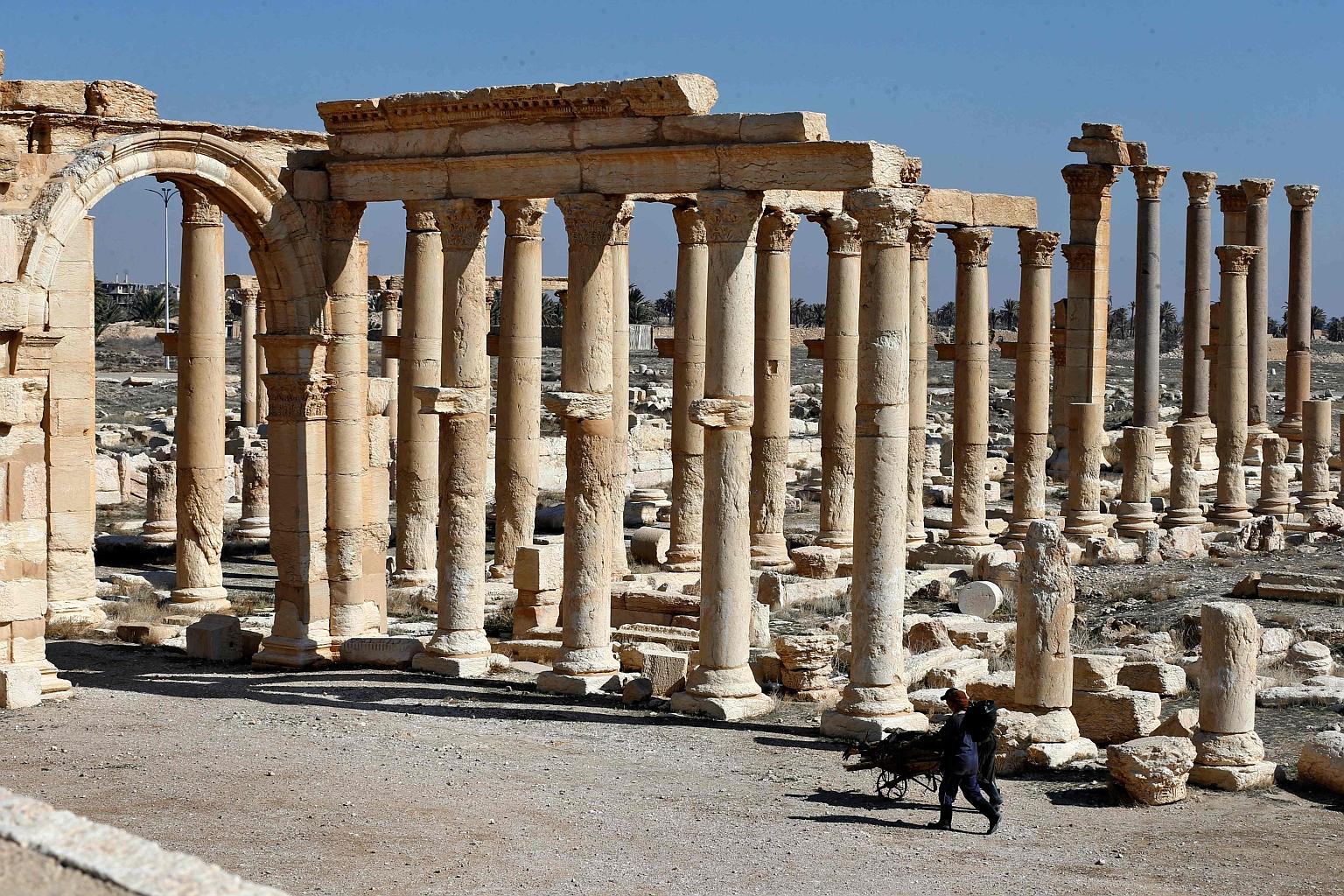ISIS' wanton destruction of Syria's heritage leaves lasting trauma
Sign up now: Get ST's newsletters delivered to your inbox

The ruins of Syria's ancient city of Palmyra. Its destruction by ISIS was just one of the irretrievable losses inflicted on Syria's heritage during a war that did not spare a single of the country's regions.
PHOTO: AGENCE FRANCE-PRESSE
Follow topic:
PALMYRA (Syria) • A decade of war has not only destroyed Syria's present and poisoned its future, it has also damaged beyond repair some of its fabled past.
Syria was an archaeologist's paradise, a world heritage home to some of the oldest and best-preserved jewels of ancient civilisations.
The conflict that erupted in 2011 is arguably the worst of the 21st century so far on a humanitarian level, but the wanton destruction of heritage was possibly the worst in generations. In a few years, archaeological sites were damaged, museums were looted and old city centres were levelled.
Standing in front of a restored artefact in the Palmyra museum he ran for 20 years, Mr Khalil al-Hariri remembers the trauma of having to flee the desert city and its treasures as they fell into the hands of the Islamic State in Iraq and Syria (ISIS) group. "I have lived many difficult days. We were besieged several times in the museum," he said, recounting how he and his team stayed behind as late as possible to ferry artefacts to safety. "But the most difficult day of my life was the day I returned to Palmyra and saw the broken antiquities and the museum in shambles," said Mr Hariri, now 60 years old.
"They broke and smashed all the faces of statues that remained in the museum... Some of them can be restored, but others have completely crumbled."
Palmyra is a majestic ancient city whose influence peaked towards the end of the Roman Empire and which was famously ruled by Queen Zenobia in the third century. Its imposing kilometre-long colonnade is unique and one of Syria's most recognisable landmarks.
When ISIS hurtled into Palmyra in May 2015 to expand the "caliphate" it had proclaimed over parts of Syria and Iraq a year earlier, the outcry was global. The contrast offered by the splendour and prowess of Palmyrene architecture as a backdrop to the barbarity of dishevelled gun-toting militants captured the world's imagination.
The site became a stage for public executions and other gruesome crimes, some of which were pictured and distributed in ISIS propaganda. The headless body of chief archaeologist Khaled al-Asaad was also displayed there by ISIS henchmen who had tortured him to get him to reveal where the site's artefacts had been transferred.
Bent on their enterprise of cultural genocide, the nihilistic militants rigged Palmyra's famed shrine of Baal Shamin and blew it up. They also destroyed the Temple of Bel, blew up the Arch of Triumph, looted what they could from the museum and defaced the statues and sarcophagi that were too large to remove.
The sacking of the ancient city dubbed "the Venice of the Sands" drew comparisons with the destruction by Afghanistan's Taleban of the Bamiyan Buddhas in 2001.
By the time government forces retook control of Palmyra in 2017, it had been irreversibly damaged.
Palmyra was just one of the irretrievable losses inflicted on Syria's rich heritage during a war that did not spare a single of the country's regions.
"In two words, it's a cultural apocalypse," said author and historian Justin Marozzi, who has written extensively on the region and its heritage. "When it comes to Syria and the Middle East in particular, I can't help thinking immediately of Timur, or Tamerlane, who unleashed hell here in 1400," said Mr Marozzi, author of Islamic Empires: Fifteen Cities That Define A Civilisation.
The reference to the Mongol conqueror is inevitable when pondering the fate of Aleppo, Syria's economic hub before the war and once home to one of the world's best-preserved old cities.
Professor Maamoun Abdulkarim was Syria's antiquities chief when the worst of the destruction occurred, from 2012 to 2016.
"Complete and utter destruction. We're not talking just about an earthquake in some place or a fire in another - or even war in one city - but destruction across the whole of Syria," he said.
AGENCE FRANCE-PRESSE

